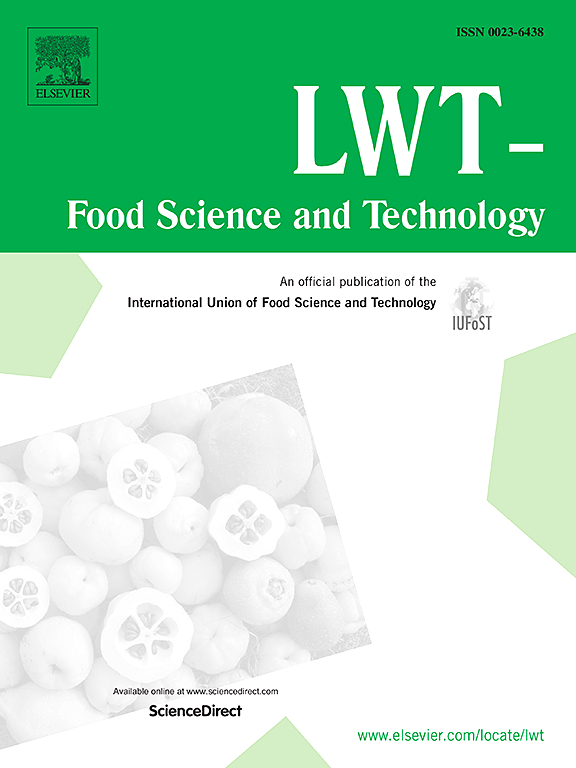煮熟的香思妙米的气味活性化合物随碾磨程度的变化
IF 6
1区 农林科学
Q1 FOOD SCIENCE & TECHNOLOGY
引用次数: 0
摘要
本文章由计算机程序翻译,如有差异,请以英文原文为准。

Variation of the odor-active compounds of cooked fragrant Simiao rice with degrees of milling
This study identified 20 key odor-active compounds in cooked brown rice (CBR), cooked medium-milled rice (CMMR), and cooked well-milled rice (CWMR) of fragrant Simiao rice by gas chromatography-olfactometry-mass spectrometry and odor activity value (OAV). Based on the metabolomics analysis method, aroma fingerprints for CBR, CMMR, and CWMR were established, and 10 differential odor-active compounds contributing to their odor differences were identified, including hexanal, nonanal, heptanal, octanal, decanal, (E)-2-decenal, (E,E)-2,4-decadienal, tetradecanal, acetoin, and 2-pentylfuran. An analysis of the source, OAV, and correlation with lipid content of differential odor-active compounds confirmed that variations in raw rice lipid content led to odor differences of cooked rice with different degrees of milling. Upon the comprehensive evaluation of bran degree and ratio of germ-remained kernels of the samples, it was established that monitoring the ratio of germ-remained kernels during milling was crucial to ensure odor quality of CMMR. This research had significant implications for guiding the medium milling and advancing in the flavor and breeding of rice.
求助全文
通过发布文献求助,成功后即可免费获取论文全文。
去求助
来源期刊

LWT - Food Science and Technology
工程技术-食品科技
CiteScore
11.80
自引率
6.70%
发文量
1724
审稿时长
65 days
期刊介绍:
LWT - Food Science and Technology is an international journal that publishes innovative papers in the fields of food chemistry, biochemistry, microbiology, technology and nutrition. The work described should be innovative either in the approach or in the methods used. The significance of the results either for the science community or for the food industry must also be specified. Contributions written in English are welcomed in the form of review articles, short reviews, research papers, and research notes. Papers featuring animal trials and cell cultures are outside the scope of the journal and will not be considered for publication.
 求助内容:
求助内容: 应助结果提醒方式:
应助结果提醒方式:


